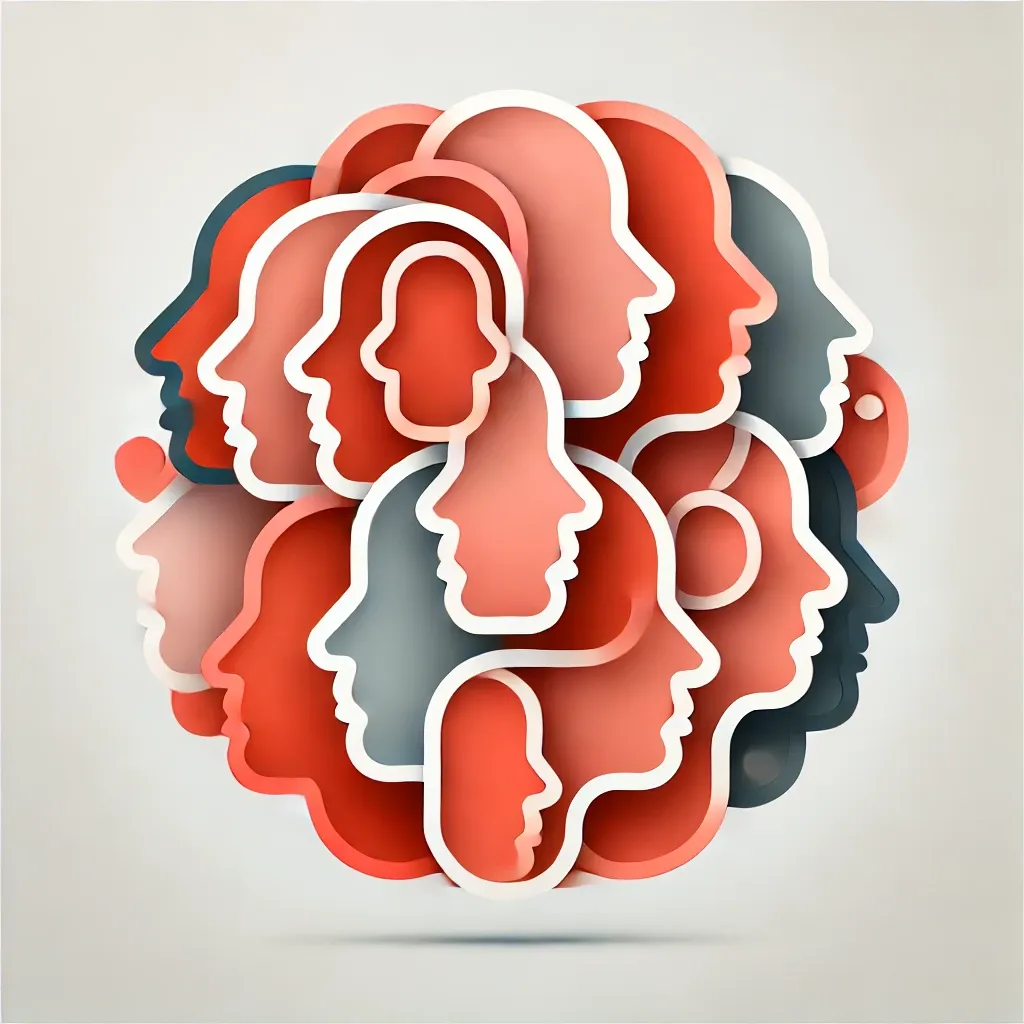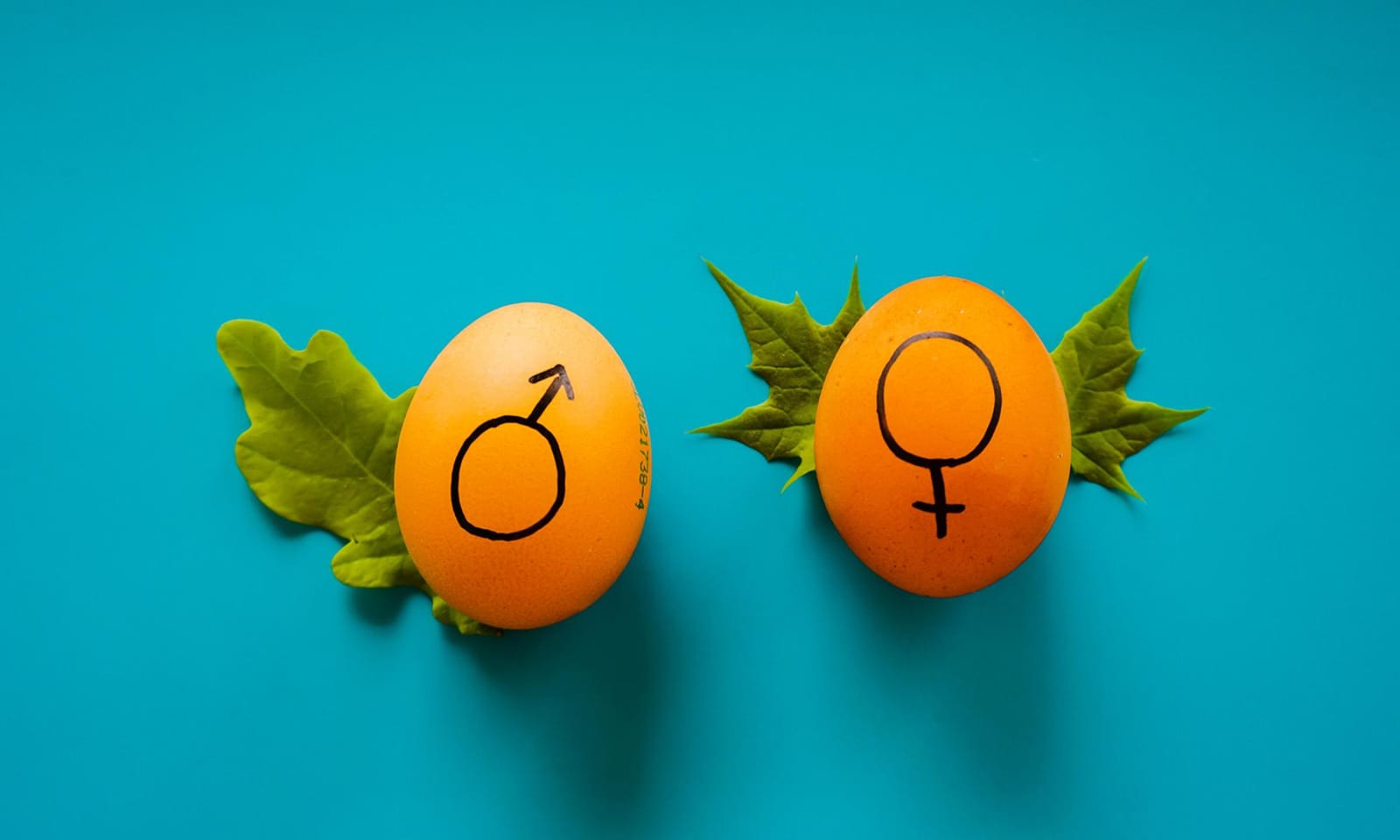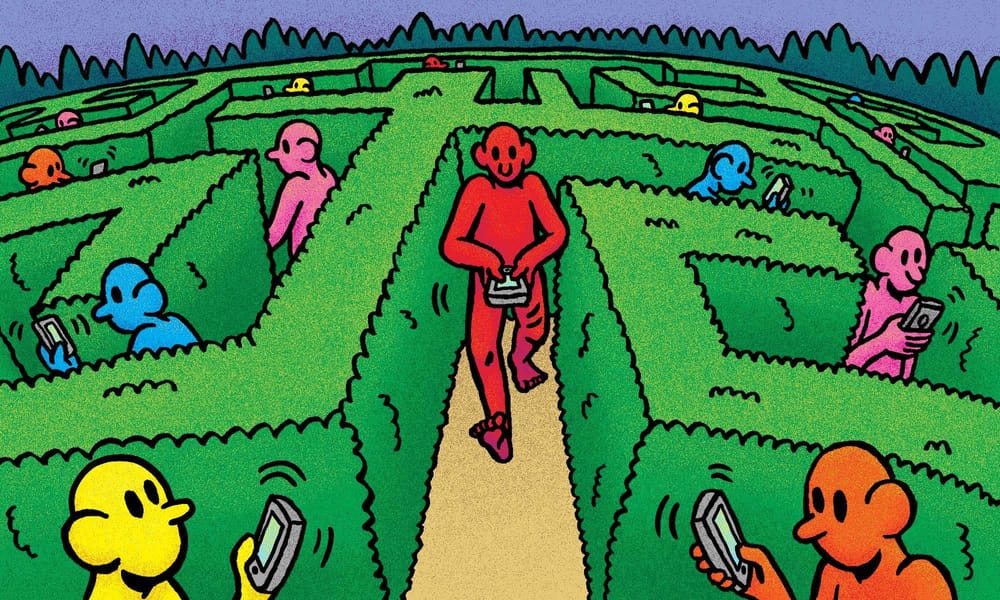I’d like to immediately acknowledge that this is an extremely sensitive topic that often provokes shock, even dismay. I write as a queer individual—queer in a political sense and queer in terms of my gender (genderqueer) and sexuality (ace-gay). I also write as a professor of queer studies.
Lady Gaga released her ever-popular song “Born This Way” 10 years ago to promote messages of acceptance and self-discovery.
Of the song’s meaning, she says, “You have your entire life to birth yourself into becoming the ultimate potential vision that you see for yourself . . . Who you are when you come out of your mother’s womb is not necessarily who you will become. “Born This Way” says your birth is not finite, your birth is infinite.”
This song’s lyrics, while sometimes facing criticism for being racist, aim to include all. Its words include:
Whether you’re broke or evergreen
You’re Black, White, beige, Chola descent
You’re Lebanese, you’re Orient
Whether life’s disabilities
Left you outcast, bullied, or teased
Rejoice and love yourself today
‘Cause baby you were born this way
No matter gay, straight, or bi
Lesbian, transgendered life
I’m on the right track baby
As often happens with cultural productions, “Born This Way” has developed along trajectories of its own and has become an anthem of LGBTQ+ acceptance, at least in the United States, and for new types of feminism. Inspired by the song’s biological essentialism when read literally, queer people and their allies have come to overwhelmingly argue that lesbian, gay, bisexual, transgender and other queer individuals were literally born in such ways and have no control over their gender and their sexuality.
While “born this way”—and even “born in the wrong body”— philosophies have been instrumental in advancing civil rights and achieving personal acceptance, it’s misguided and, in the big picture, harmful. It’s a product of our current time and place and only grants queer people negotiated civil rights because “they are born abnormally,” not because everyone deserves basic human dignity and autonomy.
Saying people are “born queer” only offers an illusion of protection and does harm by intensifying difference, by circumventing free will and by actually rejecting the self-discovery Lady Gaga intended. Humans should be accepted for who they say they are, and rights shouldn’t depend on false invocations of biology.
Academically, “born this way” rhetorics are rejected based on biological, historical, and philosophical evidence, but this rejection remains controversial among the general public.
Context
Before I delve further into this topic, I want to make several points particularly clear.
Difference, freedom, and self-acceptance are not celebrated values in the United States. American culture is entrenched in mores of the imperialist White supremacist capitalist (heteronormative ableist theistic) patriarchy that demand and applaud blind conformity and blind obedience. And we continue to live in a deeply queer-phobic society—the “born this way” movement has had limited success at reforming the hearts and minds of others, as evident by the ongoing pressure for conversion therapy programs and by continued violence toward queer people, especially trans Women of Colour.
“Born this way” and history
The “born this way” phraseology has come to operate in popular discourses as if queer people are indeed conceived as queer fetuses before becoming queer babies, queer children, and then queer adults. This is inaccurate. Fetuses and newborns are not attracted to anyone and do not have conceptions of what we call masculinity and femininity. Taken to its beginnings, then, a literal “born this way” philosophy is a logical fallacy.
Homo sapiens are not “born gay.” Homo sapiens are also not “born straight.” And Homo sapiens aren’t born a man or woman, aren’t born cisgender or transgender, aren’t born with talent toward math or science, and aren’t born Black or Hispanic or any other race either. There is no evidence to support essentialism, that is connecting identities to biological forces. There is no scan and no blood test and no physical examination and no other way to measure or determine a person’s sexuality or a person’s gender. Scientific studies that occasionally suggest biological connections between sexuality and biology are systemically flawed, often by not recognizing the differences between gender and sex, by relying on stereotypes of masculinity and femininity, and by working from subjective, unstable and overlapping definitions of sex, of gender and of sexuality.
Of course, the non-conforming have existed for millennia, as have participants in same-sex behaviour. In Papua New Guinea, for example, cultural practices have existed that require boys to orally stimulate the penis of slightly older boys or men and consume the semen in order to transition into manhood. But, such is not a “sexual” practice in their system of mores. Identical behaviours are assigned vastly different meanings by different groups, meanings that have changed and will continue to change, disproving any notion of “born this way” again and again.
Sexual orientations and notions of being “heterosexual,” “homosexual,” “bisexual,” and even “being in love” are new identities, having generally emerged in the late 19th century starting in Germany and spreading to western Europe and then to the United States because of capitalism and industrialism, and the respective definitions, as with all words, are dynamic. Initially, for example, “heterosexual” described those men and women too obsessed with non-procreative sex, and “homosexual” referred only to a passive partner in a same-sex sexual encounter or to a gender non-conforming individual.
Such new and rigid socially constructed, cultural identities cannot be traced back to biological origins, even more so when the actual causal factors are well-known. Procreation existed among Homo sapiens without heterosexuality for millions of years.
Under “born this way” people are considered inauthentic if they have anything other than a singular gender and singular sexual identity, as well as corresponding singular behaviours. In contrast to demands for such coherency, sociologist Dr Jane Ward and others have written about how often straight White men have (not gay) sex with men. These men sincerely maintain a heterosexual identity (and often long-term sexual relationships with women), but their sexual behaviour includes same-sex genital contact. Such differences and lack of alignment between identity, desire, attraction, opportunity, and behaviour are commonplace across times and places where structures exist that attempt to catagorise and regulate human emotions.
Nature v. nurture
For those who have come to have substantial investment in how “born this way” functions as meaning queer people are queer from the beginning, sometimes the re-learning necessary to move away from such ideas is assisted by considering how heteronormativity is about “teaching” people to be cishet (cisgender and heterosexual).
People are primarily biological products of stardust, and we are all shaped by society and its infinite forces. Again, individuals aren’t born “gay” or “straight.” In a process that begins as soon as “the sex” of a fetus is revealed billions of advertising capital, billions of educational capital, and billions of political capital are spent instructing people as to what appropriate behaviour looks like, as to who and what to appropriately desire, and as to what society rewards. But, this institutional teaching sometimes fails.
In The Tragedy of Heterosexuality, Dr Jane Ward writes: “Men love women’s bodies, we are told, but only after women spend an inordinate amount of time whipping their bodies into a loveable shape—by dieting, shaving, waxing, dying, perfuming, covering with makeup, douching and starving them.” She also writes about how much energy society has recently put into “making” humans properly heterosexual by the abundance of marriage advice books and dating coaches. For centuries, Western traditions have told men to “control women” and that they were superior, but with the gradual rise of heterosexuality in the 20th century, men were first told to love women. If the “opposite sexes” are really attracted to one another, Ward argues, there wouldn’t be so many homosocial—yes, homosocial—rituals in our society: man caves, baby showers, bridal showers. Women and men often marry each other for reasons that include anything but loving attraction.
In addition to the parallel of heterosexuality being without biological origins, there are other useful ways to think about academia’s rejections of essentialism.
You’re not born communicating with the language you were born into. But it probably seems like you were.
Or, consider the following: sometimes we hear, “they were born to be a piano player,” meaning they were gifted that at conception. What if they were born in a time and place without pianos? What if they couldn’t afford one? What if they weren’t allowed to play because of sexist, racist traditions?
Culture shapes and creates what’s possible.
Sex is an illusion
It’s also useful to remember that any notion of an “opposite sex” is biologically inaccurate. There are few differences among humans, save for external sexual organs in most cases and these account for a tiny percentage of the total differences. Gender is what creates the illusions of insurmountable differences, as well as the widespread idea that all humans fall into either the “male” or the “female” box. Our biological sex is a combination of far more than chromosomes or genitalia, and our biological sex changes over time, such as when hormone levels vary or such as when certain surgeries occur.
“Born this way,” then, is additionally false because of the false sex binary it relies on: there are as many sexes as there are humans. There is also no such thing as the “same sex.”
Ultimately, people are not attracted to “the same” or to “the opposite” sex but are sometimes attracted to bodies performatively decorated as and functioning as a given gender.
On the note of science and biology, “born this way” creates room for looming threats because it treats cishet-ness as the biologically correct and compulsory condition. If some Homo sapiens are “abnormal” by birth, the logic follows that “cures” should be sought, cures that can only be rooted in pseudoscience. Scientific illiteracy has been and is a dangerous, often serious issue in the United States.
Imperfect origins
People sometimes say, “If queer people aren’t “born that way,” how do you explain queer people from households that hate queer people?” Dr Jane Ward also notes that “sexual desires are developed by a complex of forces.” She explains, “It is quite possible, for example, that children who are attuned to the tragedy of heterosexuality, or who are keen observers of the misery wrought by heteropatriarchy in the lives of their parents of other significant adults, are oriented otherwise by a desire to avoid such.”
The household a person grows up in has a substantial, but far from the only, influence on who they become. We are similar to and different from our childhood guardians in all kinds of ways. Our desires are shaped by social media, by television, by teachers, by friends, by random events, by books, by songs and by much more. And people frequently thrive on exploring the forbidden, even if unconsciously.
Feminist author and scholar Dr bell hooks (she spells her name with lower case letters) says in Feminism is for Everybody that “Early on many feminists were pessimistic about men changing. Some heterosexual women decided that they would choose [emphasis added] celibacy or lesbianism over seeking after unequal relationships with sexist men.”
And when considering the “origins” of specific queer people, we must avoid the nature v. nurture trap. Biological hormones are not responsible for feelings toward other peoples and bodies and for where people fall within pre-existing yet still culturally created identity boxes. For everyone, sexual attraction and desire itself is, at least in part, a learned behaviour, contrary to resting only in human physiology.
Violence is all too normal
People often say, in response to queerness, that no one would “choose” to be oppressed or face violence, so of course, “born this way.” It’s far more complicated than that, as partly seen above. Think of it this way: I chose to be a scholar and an activist. That means I regularly get hate mail and have gotten death threats. Do I deserve these? No. But I still choose such a profession because I love learning, teaching, researching, and writing.
No-one-would-choose-to-be-oppressed reasoning gives a pass to violence if people “have it coming” and promotes problematic respectability politics resting on conditional acceptance.
In addition, considering the overall risk for harassment and violence in the United States, people of all sexual orientations, all ages, all genders, all abilities and disabilities are at risk. Incidents of domestic terror are endemic in romantic relationships; yet, people continue to consent to romantic relationships. People participate in all kinds of “dangerous” or “risky” behaviours knowing the possible side effects.
The real problem is societal tolerance of patriarchy-based violence: society only subjects queer people to no-one-would-choose-to-be-oppressed rhetorics.
“Born this way”: past, present and future
“Born this way” is not an accurate way to describe the origins of who we are.
While some queer people specifically say they “choose” to be gay or trans—and that’s great—it doesn’t mean all queer people made such tangible choices. Most didn’t. Choices aren’t celebrated. And because of society’s gravity, we can’t completely choose anything of our own volition. Society has vast influences over what we think, what we see, what we understand, how we live and what we can do.
And yet, “born this way” has proven to be true for many when providing the all-too-required explanations of “why are you queer?” Things are true if they help people make sense of the universe, help construct narratives and worldviews that allow for happy, comfortable lives and help validate hopes and fears.
And thus, “born this way” has provided a quick, now-predictable and acceptable, go-to explanation to explain who they are and what they feel. For those growing up in especially toxic environments, “born this way” has certainly saved lives and has fostered trauma recovery. It has empowered and protected people in our imperfect, conformist-demanding world.
And yet further empowerment is possible. My students, queer and not queer, often report feeling more liberated after we deconstruct “born this way” and after they have a chance to grapple with this emotionally demanding idea. The unlearning necessary takes time and isn’t always safe for queer people just focused on survival.
My hope for others is that we can work toward owning hopes, embracing the few tangible choices possible and accepting the unknowns about ourselves and others.
Andrew Joseph Pegoda (@AJP_PhD) holds a PhD in History and teaches women’s, gender and sexuality studies; religious studies; and English at the University of Houston. Previous articles can be found in The Conversation, History News Network, Inside Higher Ed, Time, and The Washington Post, among many others.







